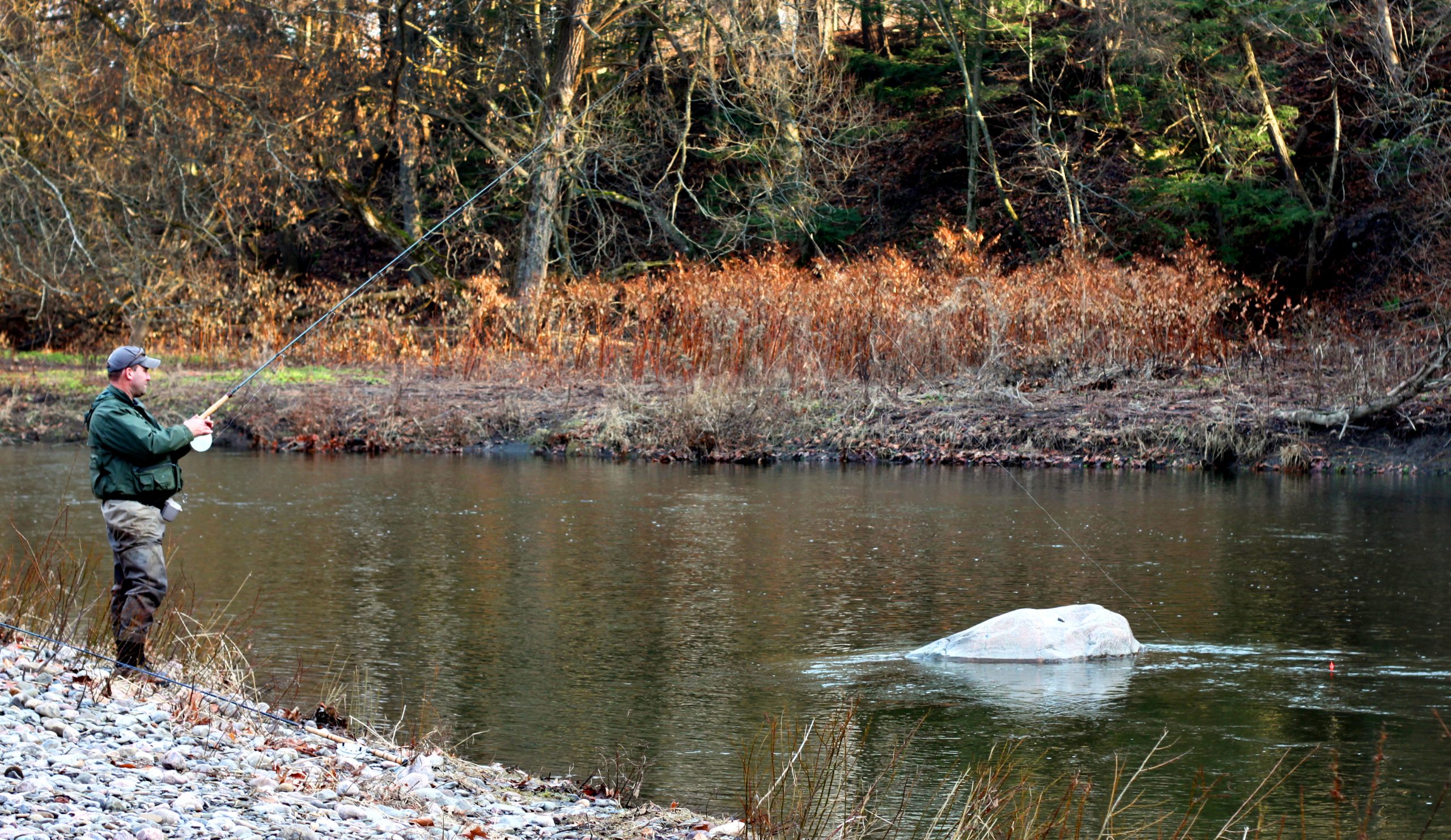
Big float, small float, short float, tall float. When fishing for steelhead, which float to use when and in which conditions, can be a conundrum. The good news is that, like almost everything else in the sport, there are no absolutes.
There are really only two things to remember when you select a float. First, the basic job of any float is to provide a vertical presentation for baits, in a manner that is as natural as possible. Second, be a MacGyver. Creativity in how you understand and solve that problem will lead to better results.
Fixed float
Fixed floats are the most used by Ontario’s salmonid anglers, simply because their versatility is unmatched. They are affixed to the line, usually by rubber tubing at the top and bottom ends of the float, so they are easily adjustable and interchangeable. They are good in all conditions. But because they are designed for trotting, they are hands down your best bet in fast current. Feedback is immediate when you have a fish on, and they also suffer less from tangles than slip floats.
Slip float
Because the line passes right through them, their strengths are in the great variability of depths in which they can be used, and the action you can impart to your bait. Once your lead exceeds 12 or 13 feet, they are the only comfortable solution.
With many designs approximating the streamlined form of fixed floats, they are the kings of “wiggle,” ideal for jigs, flies, and live bait where that little extra action is needed to entice a strike. That’s not to say that you can’t wiggle baits with a fixed float, but a good slip float will barely move when you do so, and that can make all the difference.
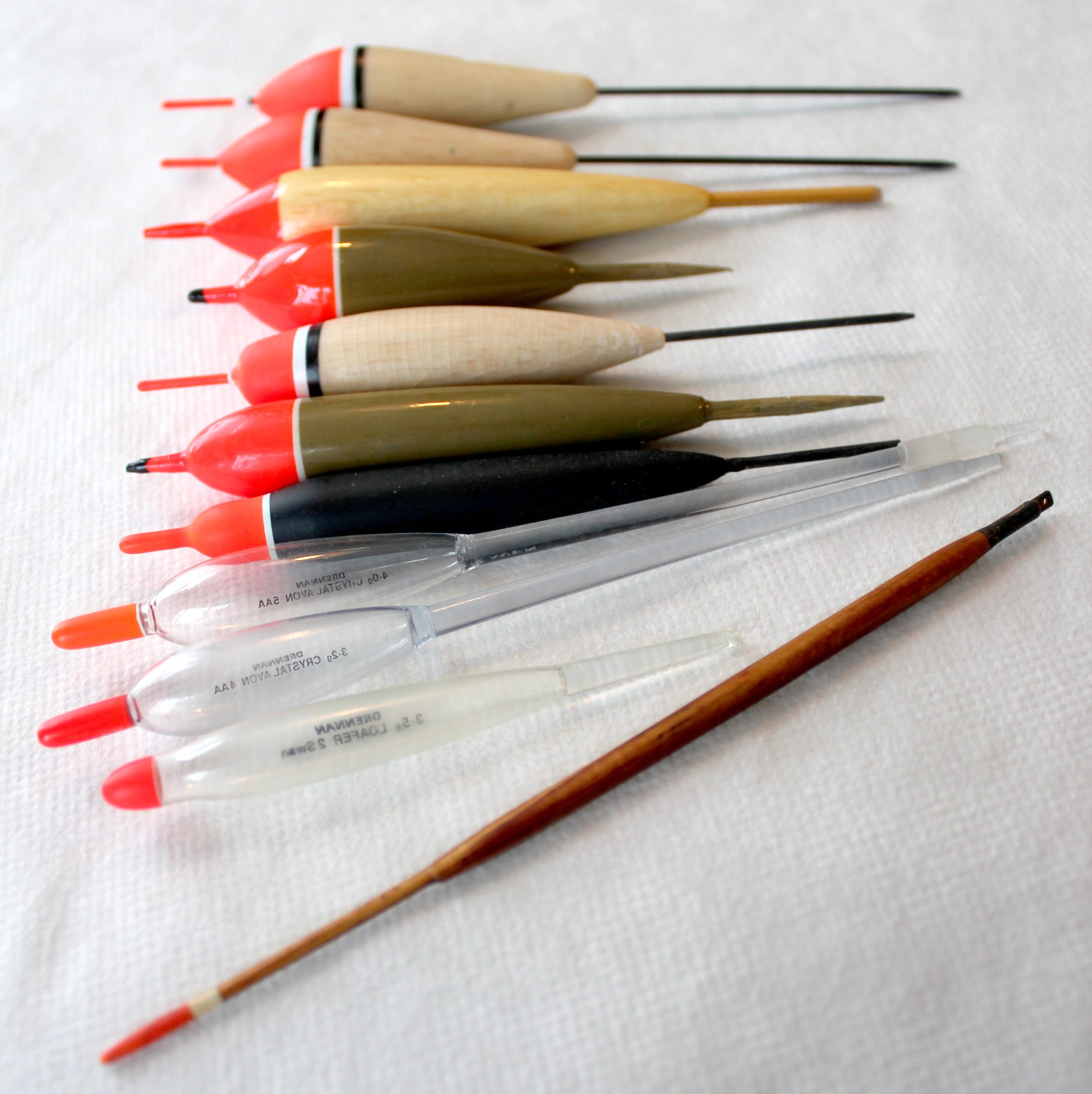
I carry a variety of styles to suit any condition.
Weight and shape
Thin floats are best when sensitivity and stealth are at a premium. Their slight profile can make them more difficult to spot from below, and their hydrodynamic shape (when weighted properly) will register even the subtlest nibble. Match the thinness of your float to the speed of the water you’re fishing; the slower the flow, the thinner the float. Case in point: in frog water, a thin, clear plastic float is most likely to escape the attention of wary trout. If you are targeting a faster stretch of river, however, using a thicker float will mitigate the number of false strikes from your bait tapping bottom.
Dealing with high winds can be most annoying when trying to cast a float. Worse, when you’re plying slow water, gusting breezes often push your float out of its natural drift. When faced with these conditions, switch to a squat, over-weighted float. Their low profile and wide girth make these floats more stable than their thinner, longer counterparts.
The extra weight helps resist unwelcome pulls from the wind as well as punch more precision into your casts. Go as big as you need to. Even in clear water and calm conditions, sizing up your float can help your bait travel at the right speed in the water column. It will also buffer your bait from undue action when you need to trot your float or mend your line.
Finally, there are times when even the split shot that you pinch onto your line is likely to spook wary steelhead. Weighted floats are a great solution. Many of these have a leaden insert at the bottom, which naturally cocks the float and has the proper heft to indicate strikes accurately.
Alternatively, you can wrap a few inches of lead line around the stem of your float — a favoured tactic here in Ontario.
Balsa or plastic
Now we come to a place where individual preferences rule the roost. The most popular materials are balsa wood or hollow plastic. Balsa is known for its buoyancy and lightness. It is very easy to mold into the right shape for a steelhead float, and its wood construction imparts a natural action.
If balsa has a downfall, it’s that it is opaque. Sure, you can paint it, or just let the natural texture shine through, but clear plastic has a huge advantage in its transparency. This can be critical, when casting to pressured fish that spook at the barest shadow overhead. Also, since plastic floats are not handmade, there is no variation in production — for example five grams is always five grams; not always the case with balsa.
Manufacturers
There are several manufacturers of floats in the province. The most prominent are Raven, Riverwood, Blackbird, Amundsen, C.A.C Streamline, and Superior Floats (superiorfloats.com). Superior floats are such works of art, one may not wish to risk one to the vagaries of mother nature! Coolwaters is another Canadian manufacturer that makes premium hand-crafted slip floats.


Originally published in the April 2023 issue of Ontario OUT of DOORS magazine
Paul is a lifelong steelhead angler who loves to catch, photograph, talk about, and write about steelhead. He has published a blog for the past 10 years.


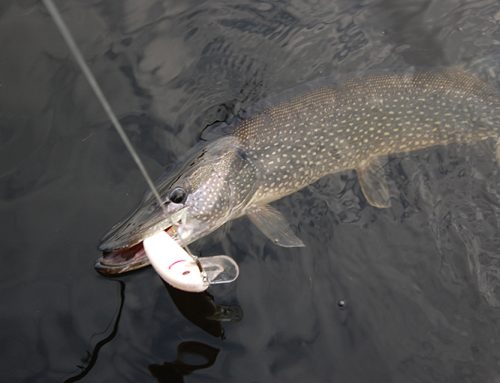
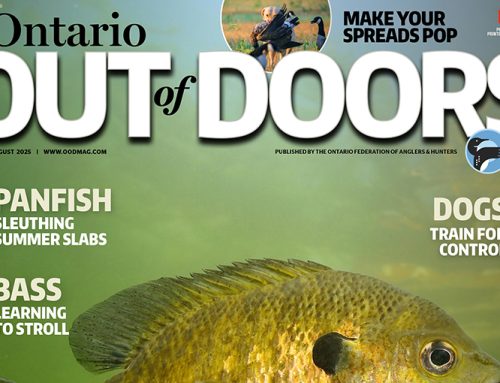
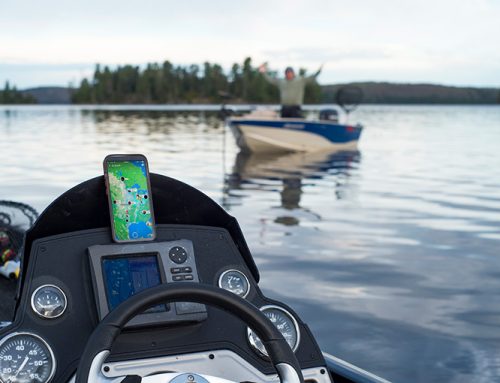
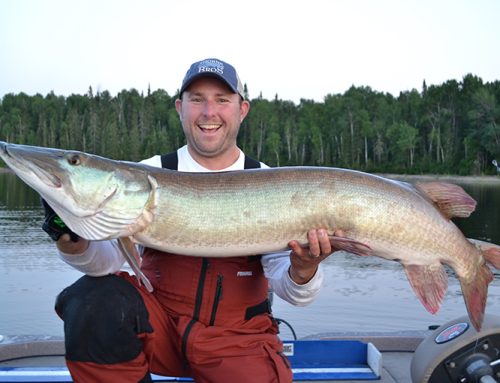
Leave A Comment